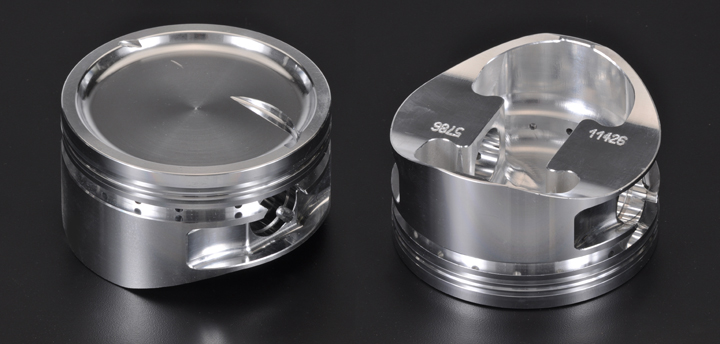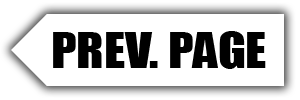After 40 to 50 passes Pro Line recommends the engine be returned for rebuild.
“Typically, 40 runs is the limit for a quarter-mile power unit,” says Patton, “and 50 for an eighth mile. Aluminum rods are replaced every rebuild. Pistons on the other hand are replaced every 120 to 200 runs, unless you burn one or have a catastrophic failure caused by something else.
“Diamond provides us with a fine product in good time. Our turbochargers generate as much as 65 lbs of ‘boost’ and our racers put them through the ringer, but we’ve found the product we get from Diamond to be a durable piston that’s very effective and their staff looks after us well.”

Most of Pro Line’s custom pistons are supplied by Diamond, including their 670cu in billet unit with 5-inch bore centers developed for 10.5in tire classes. (Small-Block Turbo Dish piston shown)
Compare that to some of the 800-900+ c.i. naturally aspirated engines that reportedly have to be freshened every 10 laps. Durability has always been a plus for turbocharged engines
Racing rules

Troy Coughlin won the 2012 NHRA Pro Mod Championship. Pro Line built the engines.
The 2014 NHRA rulebook limited the engine displacement of twin-turbocharged Pro Mod cars to 526 c.i., twin turbos to 88 mm, engine boost pressure to 43 psi and a minimum car weight of 2650 lbs. Conveniently, the NMCA, who runs six events in the east and five in the west, mirrors the NHRA rules. In contrast, in 2014 the eighth-mile only PDRA Pro Extreme rules permit lighter cars, bigger engines (540 or 572 c.i.) and 98 mm turbochargers that generate in excess of 4,000 hp.
Another class where turbocharged cars often dominate is the Outlaw Drag Radial with the rules require stock suspension and heavier steel-bodied cars. For these reasons the extra stroke length of Pro Line’s 572 c.i. engine is popular. While the 526 c.i. motor operates with two injectors (a 550lb-per-hour and a 225lb-per-hour for each cylinder) the 572 c.i. often requires two 550lb-per-hour injectors for each cylinder, depending on the fuel pressure. Sensibly, most of the sanctioning bodies adopt Pro Mod rules close to those of the NHRA. But recently Pro Line has entered the enormously popular X275 class, which accommodates light cars with small-block engines, one turbocharger and tires smaller than the 17 x 34.5in rear slick of the Pro Mod. Improbable though it sounds, the drag radial equivalent actually are often quicker and faster than cars that are allowed drag slicks.
Pro Line’s genius for turbocharging took a bizarre turn in 2009 when one of their customers, Underground Racing, requested a Lamborghini upgrade. The first year they built three or four engines and the following year around ten. To date they have built over one hundred turbocharged units. These are dispatched all over the world from Russia to New Zealand. They generate 1,200 hp at the rear wheels on pump fuel and as much as 1,900 hp to the rear wheels on race fuel. To ensure reliability Pro Line endows them with special steel cylinder sleeves of their own design and equips them with special head studs made by ARP. And drivability? Amazingly, if driven gingerly they maintain stock drivability!
SOURCES |
||
Alan Johnson Performance Engines (AJPE) 1097 Foxen Canyon Road Santa Maria, CA 93454 (805) 922-1202 www.AlanJohnsonPerformance.com |


